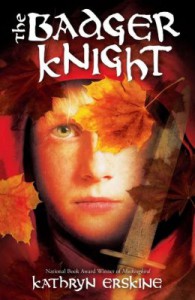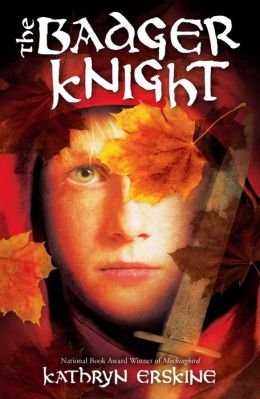 Adrian Black lives in Ashcroft, a small village in Northern England, during the Middle Ages when England is at war with Scotland and “the savage Scots are planning to invade again” (13). Adrian, who is about to turn 13 years old, yearns to be a noble, a hero, and a master archer—a dream he believes can come true if he is a soldier. However, because Adrian’s sister and mother both died in the plague, John the boyer, who is also Adrian’s father and afraid of losing his son as well, is overly protective.
Adrian Black lives in Ashcroft, a small village in Northern England, during the Middle Ages when England is at war with Scotland and “the savage Scots are planning to invade again” (13). Adrian, who is about to turn 13 years old, yearns to be a noble, a hero, and a master archer—a dream he believes can come true if he is a soldier. However, because Adrian’s sister and mother both died in the plague, John the boyer, who is also Adrian’s father and afraid of losing his son as well, is overly protective.
These are just a few of the challenges that Adrian faces. Other conflicts include his Good Aunt—a misnomer if there ever was one since she is snappish and cruel; the unholy trinity: bullies named Bryce, Warren, and William; and his status as a useless addlepate. Puny, pale of skin, and prone to wheezing and coughing, Adrian likely has albinism and asthma. But in 1347, these conditions were unknown by those names. Still, Adrian wants to be a man and to prove his worth by joining the battle against the pagans.
When his best friend, fifteen-year-old Hugh Stout, talks of joining his father in the fray, Hugh’s Grandmother, an herbalist and psychic, tells both boys that they are too young to know the horrors of war. Not to be deterred, though, Hugh runs off, and Adrian goes after him, to bring him home. Once away from Ashcroft and its protective familiarity, Adrian confronts the frenzy, the sound, and tuneless song of the city Carlisle. Here, his senses are assaulted, but he marvels at the cathedral, which has more colors than the fair back home. On his journey to locate the battle and to find his friend, Adrian joins Henry’s gang, meets Sir Geoffrey, and faces all manner of danger before taking refuge in a priory. Here, he encounters many monks—some who are sanctimonious thieves and others like Brother Nigel who talks about truth and the power to make people question. Once Adrian reaches Hadrian’s Wall, he prays “to be noble like Henry and smart like Nigel and brave like Sir Geoffrey and Hugh, wherever he is” (187).
After he watches men die and sees a mass of bodies and blood, Adrian wonders at the purpose of war and wants nothing to do with it, but he must return to the middle of hell so that he can perform acts of valor. Now he understands Grandmother’s admonition and realizes that war’s horror is in the details, details he could neither predict nor foresee. Adrian, who calls into question his definitions of noble, pagan, and hero, decides that no one wins at war.
The Badger Knight by Kathryn Erskine recounts Adrian’s tale through the ‘tween years, as he grows into his name “Badger” and matures into a confident young man, one who learns multiple lessons:
- “Flattery often works on those who are most impressed with themselves” (238).
- “When men are angry, their behavior suffers” (264).
- Some truths aren’t real at all.
- Sometimes friends lie to keep one another’s spirits up.
- “Seeking the truth and sharing it is mightier than being a soldier” (314).
All this Adrian learns while also unlearning that “Scots are pagans, thieves are bad, knights are noble, girls are weak, war is glorious” (314), and he is useless.
Yet, this is not only Adrian’s story. Erskine’s novel also tells of Adrian’s cousin Bess, a survivor who is kind and strong despite “her ale-head father and horrible mother and sister” (260) and who has skills with the family’s ox, with archery, and with herbs and poultices. And it is Hugh’s, a young man with talent as a scientist and healer. Hugh is knowledgeable and patient: “It’s as if he doesn’t see the face of his patient, only the wound that needs treating. . . . His eyes are sharp, all-seeing, all-knowing, yet his face shows compassion and care” (207).
To further help young readers to understand her story, Erskine provides an author’s note and a glossary at the book’s conclusion. Her characters are believable, and her chapter titles work as clever foreshadowing without being spoilers. The only element missing to make this historical fiction more believable is a map of the area.
- Posted by Donna

